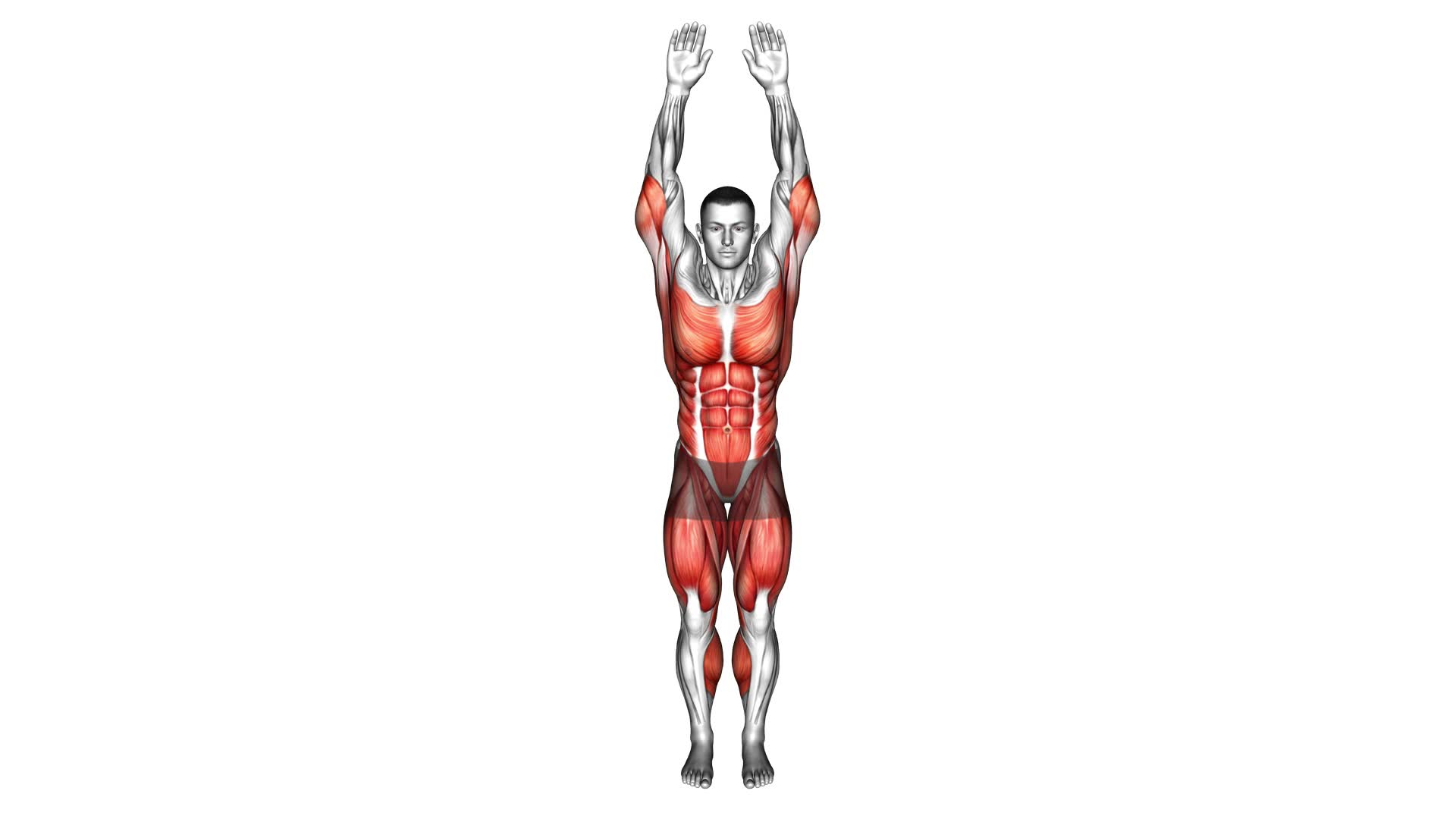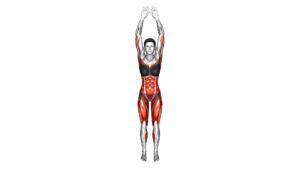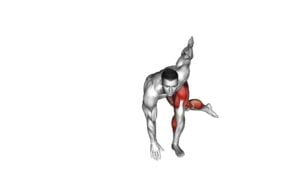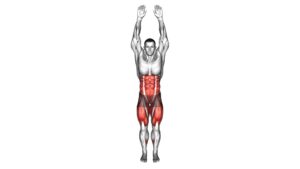Skater Arm Swings (male) – Video Exercise Guide & Tips

Looking to improve your skating skills? Check out this video exercise guide for skater arm swings specifically designed for males.
Watch This Exercise Video
In just a few minutes, you'll learn the proper technique, common mistakes to avoid, and even variations for advanced skaters.
Incorporating skater arm swings into your routine will help enhance your performance on the ice.
So grab your skates and get ready to take your skating to the next level!
Key Takeaways
- Skater Arm Swings improve overall upper body strength and stability
- Skater Arm Swings enhance performance in sports requiring upper body strength
- Skater Arm Swings strengthen shoulder muscles, including deltoids and rotator cuff
- Skater Arm Swings improve shoulder stability and throwing/swinging motions in sports
Benefits of Skater Arm Swings for Males
You can experience various benefits from incorporating skater arm swings into your exercise routine as a male.
Skater arm swings are an effective exercise that can help improve your overall upper body strength and stability. By incorporating skater arm swings into your workout routine, you can enhance your performance in various sports and activities that require upper body strength, such as hockey, basketball, and tennis.
One of the advantages of including skater arm swings in your workout routine is that it helps strengthen your shoulder muscles. As you swing your arms from side to side, you engage the muscles in your shoulders, including the deltoids and rotator cuff muscles. This not only helps improve your shoulder stability but also enhances your throwing and swinging motions in sports.
Additionally, skater arm swings can also help improve your core stability and balance. As you swing your arms, you engage your core muscles to maintain proper form and balance. This can benefit you in sports that require quick changes in direction or balance, such as skateboarding or skiing.
Proper Technique for Skater Arm Swings
To ensure proper technique for skater arm swings, it's important to understand the correct form and movement pattern. Here are some key tips to help you perform skater arm swings correctly:
- Stand with your feet shoulder-width apart and knees slightly bent.
- Start by swinging your right arm across your body to the left side, while simultaneously extending your left leg out to the side.
- As you swing your arm, keep it straight and parallel to the ground, reaching as far as you can across your body.
- Repeat the movement on the opposite side, swinging your left arm to the right while extending your right leg out to the side.
- Maintain a smooth rhythm and fluid motion as you alternate sides.
By following these guidelines, you can maximize the effectiveness of your skater arm swings.
Remember, skater arm swings offer a variety of benefits, including improved upper body strength, core stability, and coordination. Additionally, incorporating variations such as adding weights or performing the exercise on an unstable surface can further challenge your muscles and enhance your overall workout.
Common Mistakes to Avoid
In the article about skater arm swings, we now shift our focus to the common mistakes to avoid when performing this exercise. To ensure that you're getting the most out of your workout and minimizing the risk of injury, it's important to be aware of these common mistakes and learn how to correct them.
One common mistake is using too much momentum. When performing skater arm swings, it's important to engage your core and use controlled movements. Avoid swinging your arms too forcefully, as this can lead to strain on your shoulders and lower back. Instead, focus on a smooth and controlled motion, emphasizing the contraction of your muscles.
Another mistake to avoid is neglecting proper form. It's important to maintain a neutral spine throughout the exercise, avoiding any excessive arching or rounding of the back. Keep your shoulders relaxed and down, and avoid shrugging them up towards your ears.
To improve your skater arm swings, make sure to focus on your form and technique. Start with lighter weights and gradually increase the intensity as you become more comfortable and confident with the exercise. Remember to always listen to your body and rest when needed.
Now that we've covered the common mistakes to avoid, let's move on to the next section, which will discuss variations and progressions for advanced skaters.
Variations and Progressions for Advanced Skaters
For advanced skaters, there are several variations and progressions available to further challenge and enhance the skater arm swings exercise. Here are some advanced skater techniques and skater arm swing variations for you to try:
- Single-Leg Skater Arm Swings: Perform the skater arm swings exercise while balancing on one leg. This variation increases the demand on your stability and core strength, as well as your coordination.
- Weighted Skater Arm Swings: Hold dumbbells or kettlebells in each hand while performing the skater arm swings. The added weight increases the resistance and intensifies the workout, targeting your upper body muscles even more.
- Plyometric Skater Arm Swings: Incorporate a jump into the skater arm swings by explosively pushing off the ground and switching sides mid-air. This plyometric variation adds a cardiovascular element and enhances power and explosiveness.
- Reverse Skater Arm Swings: Instead of swinging your arms forward, swing them backward while performing the skater motion. This variation engages different muscles in your upper body, providing a new challenge.
- Lateral Skater Arm Swings: Instead of swinging your arms in front of you, swing them sideways in a lateral motion while performing the skater exercise. This variation targets your shoulder muscles from a different angle, enhancing overall upper body strength.
Tips for Incorporating Skater Arm Swings Into Your Skating Routine
To incorporate skater arm swings into your skating routine, focus on proper form and gradually increase the intensity and duration of the exercise. Skater arm swings are a great way to increase upper body strength for skating and improve your overall skating technique. The arm movements in skating play a crucial role in generating power and maintaining balance on the ice.
When performing skater arm swings, start by standing with your feet shoulder-width apart and your knees slightly bent. Extend one arm forward while simultaneously swinging the opposite arm back. As you swing your arms, engage your core and keep your upper body stable. Repeat this motion, alternating arms with each swing.
To maximize the benefits of skater arm swings, it's important to maintain proper form throughout the exercise. Keep your shoulders relaxed and avoid tensing up. Focus on generating power through your arms and maintaining a smooth and controlled motion.
To increase the intensity and duration of skater arm swings, you can gradually add weights to your hands or increase the speed of your swings. Start with lighter weights and gradually work your way up to heavier ones as your strength improves.
Additionally, you can incorporate skater arm swings into a circuit training routine or perform them as part of a warm-up before your skating sessions. Remember to listen to your body and progress at a pace that's comfortable for you.
Frequently Asked Questions
How Many Sets and Repetitions Should I Do for Skater Arm Swings?
To determine the number of sets and repetitions for skater arm swings, consider your fitness level and goals.
Beginners may start with 2-3 sets of 10-12 repetitions, gradually increasing as they become more comfortable.
It's important to modify the exercise by using lighter weights or no weights at all if needed.
Avoid common mistakes like using excessive momentum or swinging the arms too forcefully.
Focus on proper form and control to maximize the benefits.
Can Skater Arm Swings Help Improve My Balance and Stability?
Skater arm swings can definitely help improve your balance and stability. By engaging your core and upper body muscles, these exercises work to enhance coordination and promote overall body control.
This increased stability can translate to improved athletic performance in various sports and activities. Incorporating skater arm swings into your workout routine can be a valuable addition to your training regimen, helping you to become more stable, coordinated, and perform at your best.
Is It Necessary to Warm up Before Performing Skater Arm Swings?
Yes, it's necessary to warm up before performing skater arm swings. Incorporating skater arm swings in your warm up routine has several benefits.
It helps to increase blood flow to your muscles and joints, preparing them for the upcoming exercise.
Additionally, it activates your upper body muscles, promoting better performance during the workout.
Are There Any Specific Muscles That Skater Arm Swings Target?
Skater arm swings target multiple muscles in your upper body. They primarily work your shoulders, triceps, and upper back. These exercises provide several benefits, including improved upper body strength, increased shoulder stability, and enhanced posture.
Skater arm swings can be performed in various ways to add variety and challenge to your workout routine. Incorporating different arm movements and speeds can further engage your muscles and help you achieve your fitness goals.
Can Skater Arm Swings Be Beneficial for Female Skaters as Well?
Skater arm swings can definitely be beneficial for female skaters as well. These exercises help improve upper body strength and stability, which are important for maintaining balance and control during skating.
To modify skater arm swings for females, you can start with lighter weights and gradually increase as you get stronger. Additionally, focusing on proper form and technique will maximize the benefits and prevent any potential injuries.
Keep up the good work!
Conclusion
Incorporating skater arm swings into your skating routine can provide numerous benefits for male skaters. By following proper technique and avoiding common mistakes, you can improve your arm strength, balance, and coordination.
Advanced skaters can also explore variations and progressions to challenge themselves further. Remember to always prioritize safety and consult with a professional trainer if needed.
Start incorporating skater arm swings into your routine and enhance your overall skating performance.

Author
Years ago, the spark of my life’s passion ignited in my mind the moment I stepped into the local gym for the first time. The inaugural bead of perspiration, the initial endeavor, the very first surge of endorphins, and a sense of pride that washed over me post-workout marked the beginning of my deep-seated interest in strength sports, fitness, and sports nutrition. This very curiosity blossomed rapidly into a profound fascination, propelling me to earn a Master’s degree in Physical Education from the Academy of Physical Education in Krakow, followed by a Sports Manager diploma from the Jagiellonian University. My journey of growth led me to gain more specialized qualifications, such as being a certified personal trainer with a focus on sports dietetics, a lifeguard, and an instructor for wellness and corrective gymnastics. Theoretical knowledge paired seamlessly with practical experience, reinforcing my belief that the transformation of individuals under my guidance was also a reflection of my personal growth. This belief holds true even today. Each day, I strive to push the boundaries and explore new realms. These realms gently elevate me to greater heights. The unique combination of passion for my field and the continuous quest for growth fuels my drive to break new ground.







